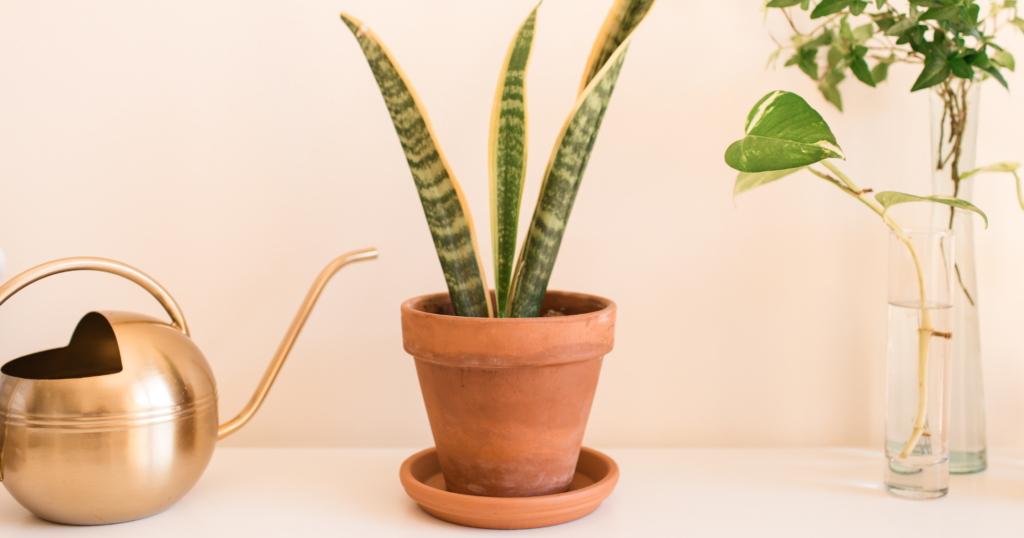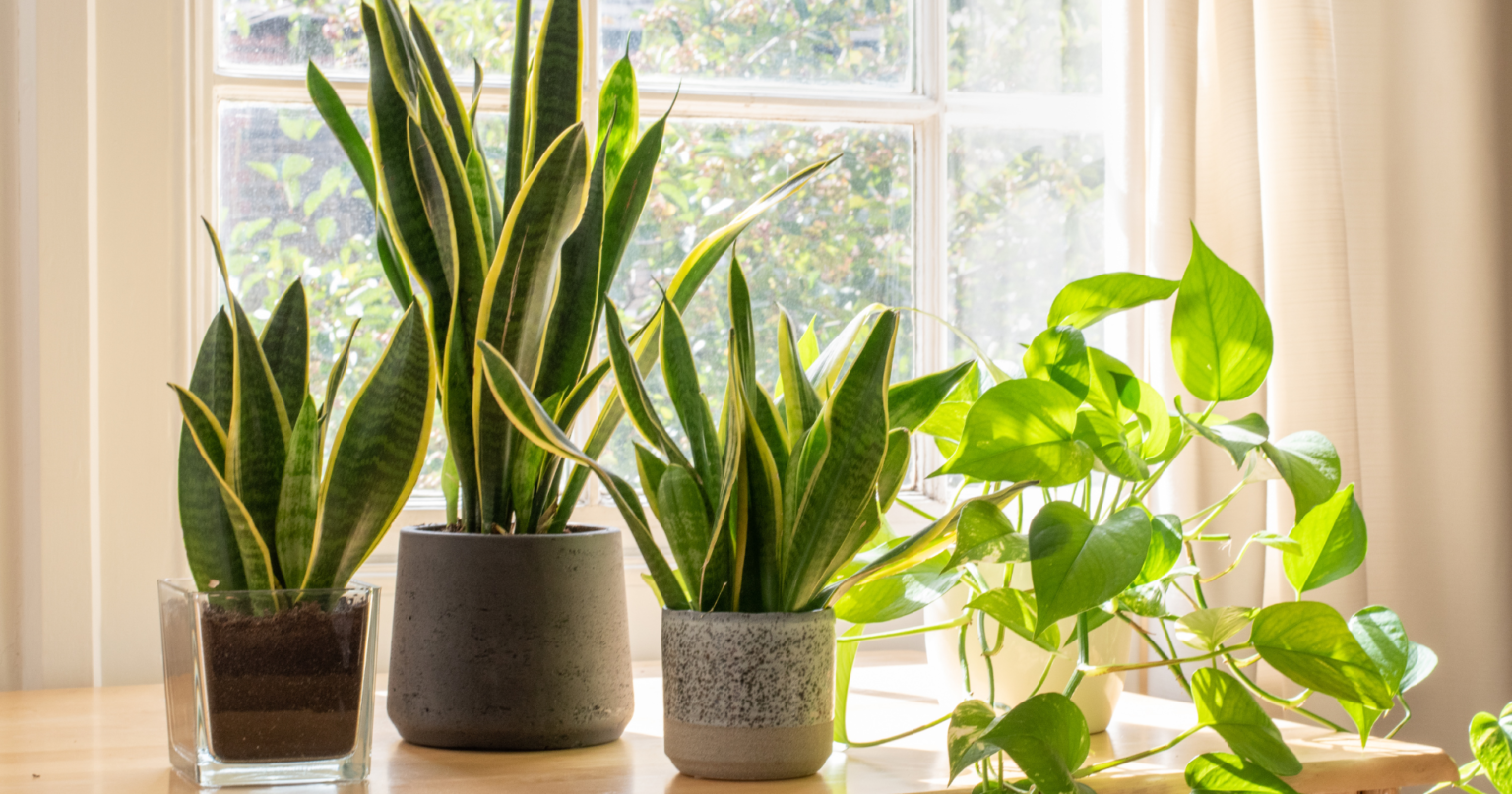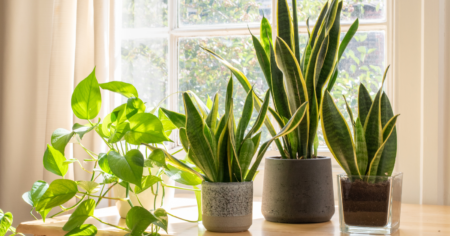Are you looking for the types of snake plants, that how many types of snake plants and what are the benefits of these snake plants. If yes then you come to the right place. In this blog post, I give you a complete detail about the types of snake plants.
When it comes to houseplants, snake plants are rising stars. With over 70 species and countless cultivars, these plants are available in a dazzling array of shapes, sizes, and colors to suit any style. From the hugely popular Dracaena trifasciata with its sword-shaped leaves to the tiny rosette-forming Dracaena hahnii, there’s a snake plant for everyone’s taste.
We’ll guide you through the main types of snake plants and provide growing tips for these undemanding yet striking plants. Discover the best snake plants to purify indoor air, add a modern twist to your home decor, or brighten up low-light spots. By the end, you’ll know which variety (or varieties!) should slither into your plant collection. So uncoil that green thumb and get ready to meet some spectacular snake plants!
What makes snake plants the ultimate green warriors in urban jungles?

With their striking sword-shaped leaves and sculptural form, snake plants are the ultimate urban jungle warriors. Extremely resilient, they thrive on neglect and adapt to almost any environment – from bright light to low light conditions. According to NASA’s Clean Air Study, snake plants effectively remove toxins like formaldehyde and benzene from indoor air.
They also release moisture and oxygen, helping combat allergens and even improving sleep. Visually, snake plants add drama with varieties featuring mesmerizing green and white variegated leaves or elegant cylindrical spirals. They effortlessly complement modern decor with their minimalist vibe.
Best of all, snake plants require very little maintenance compared to other plants. Simply water every 2-3 weeks when soil is dry. Their pest-resistant properties are the icing on the cake for these warrior plants. Unfussy, striking and natural air purifiers, snake plants are the ideal urban jungle green companions.
How do snake plants stand out in the plant kingdom with their benefits?

Snake plants are truly unique and exceptional houseplants. Their sword-like leaves add dramatic architectural beauty while also naturally purifying indoor air. Unlike most plants that release oxygen during the day, snake plants uniquely produce oxygen at night, creating a healthier bedroom environment for better sleep.
Furthermore, they filter out harmful toxins like formaldehyde and xylene. Their resilience is equally impressive – they thrive on neglect, tolerating low light, irregular watering, and poor soil. Snake plants are thus the ultimate beginner plant, perfect for busy homeowners.
Beyond functionality, different varieties display mesmerizing leaf patterns and colors, from deep green Tiger stripes to bright golden edges. Their distinctive shape and hardy nature have made them a staple decoration in modern homes. For both health and aesthetic benefits, snake plants are indeed in a league of their own among indoor plants.
How Many Types of Snake Plants Are There?
Snake plants, with their striking foliage and resilience, have cemented themselves as favorites in the realm of houseplants. Among their ranks, at least 10 distinct types offer a diverse palette of shapes, sizes, and colors, catering to a wide range of aesthetic preferences and care requirements. Below I’ll share the 10 types of snake plants that can inspire you about the snake plants.
- Sansevieria Trifasciata ‘Laurentii’ (Golden Snake Plant): The Laurentii snake plant is known for its green leaves with vibrant yellow edges. It grows upright, reaching 2-4 feet tall, with thick leaves in a rosette shape. This easy-care plant does well in various lighting conditions and only needs occasional watering.
- Sansevieria Cylindrica (Cylindrical Snake Plant): The cylindrical snake plant has round, stiff leaves that grow in a fan shape, reaching up to 6 feet tall. The leaves are subtly striped and have a cylindrical shape rather than flat leaves. This drought-tolerant plant requires infrequent watering and thrives when neglected.
- Sansevieria Trifasciata ‘Hahnii’ (Bird’s Nest Snake Plant): A compact variety growing only 8-12 inches tall, the Hahnii forms a rosette of leaves resembling a bird’s nest. The leaves are dark green and spoon-shaped. It grows slowly but is extremely hardy and adaptable, tolerating low light and irregular watering.
- Sansevieria Ehrenbergii (Samurai Snake Plant): The Samurai snake plant has sword-shaped leaves that can grow in a fan arrangement. The blue-green leaves have interesting patterns and grow 1-3 feet tall. It prefers bright light but still tolerates low light conditions quite well compared to other plants.
- Sansevieria Kirkii (Star Sansevieria): Star sansevieria is known for its star-shaped leaf arrangement. The leaves have silver and dark green variegated patterns. It grows low and spreads out, reaching about 12 inches tall. This variety is extremely hardy and handles neglect well.
- Sansevieria Trifasciata (Mother-in-Law’s Tongue): The classic Mother-in-Law’s Tongue has tall, rigid, dark green leaves with light green horizontal bands. It grows upright, often reaching 3-4 feet tall indoors. Extremely resilient, it tolerates all lighting conditions and irregular watering.
- Sansevieria Zeylanica (Ceylon Bowstring Hemp): This variety has long, narrow leaves with dark green horizontal stripes on a lighter green background. The leaves grow upright in a rosette shape and can reach 3 feet tall. It adapts well to various light and handles droughts easily.
- Sansevieria Francisii: Uniquely shaped leaves twist and turn as they grow, forming a spiral pattern. The leaves have light and dark green marbled patterns. It reaches about 12 inches tall and does well in bright light conditions.
- Sansevieria Masoniana (Whale Fin Snake Plant): Masoniana has extremely wide, paddle-shaped leaves, growing up to 4 feet long. The blue-green leaves have mottled patterns. It requires very little maintenance and adapts to low light conditions quite well.
- Sansevieria Patens: This variety forms a rosette pattern with slightly curved leaves. The blue-green leaves have red tips when young, fading to green with age. It reaches about 12-15 inches tall and spreads out as it grows. Easy to care for, it tolerates low light and inconsistent watering.
How to Pick the Perfect Type of Snake Plant for Your Space?
Choosing the perfect type of snake plant for your space is akin to selecting a piece of art that breathes literally. These hardy, air-purifying plants add a touch of greenery to your home and come in various shapes, sizes, and colors, making them the perfect living decor. But how do you pick the one that’s just right for you? Let’s slither through the considerations, pairing tips, and care instructions to ensure your snake plant survives and thrives.
1. Considerations
First and foremost, consider your space’s lighting. Snake plants are famously resilient and can thrive in low light, but some varieties, like the ‘Sansevieria Trifasciata Laurentii’, adore a bit of sunlight to show off their golden edges. Space is another factor taller varieties like the ‘Sansevieria Zeylanica’ can grow up to 3 feet high and make a bold statement in a roomy corner, while the compact ‘Sansevieria Hahnii’ is perfect for cozy spaces. And let’s not forget about aesthetic preferences. Whether you lean towards the dramatic, with the dark, almost black ‘Sansevieria Black Coral’, or prefer the understated elegance of the ‘Sansevieria Moonshine’, there’s a snake plant for every taste.
2. Pairing with Decor
Snake plants are like the chameleons of the plant world; they can fit into almost any interior design scheme. For a modern, minimalist space, the sleek lines of the ‘Sansevieria Laurentii’ with its yellow borders offer a striking contrast against white walls. In bohemian interiors, the ‘Sansevieria Cylindrica’, with its round, spear-like leaves, adds an element of whimsy and texture. And for those who appreciate the rustic charm, the rugged, variegated leaves of the ‘Sansevieria Kirkii’ can add a touch of wilderness.
3. Care Tips
Caring for a snake plant is as easy as pie. These resilient plants prefer to dry out between waterings, making them perfect for the forgetful waterer. Though well-draining soil is their best friend, they’re not picky about potting soil. And while they’re tolerant of low light, giving them a dose of indirect sunlight will keep them happiest. Remember, the only sure way to kill a snake plant is by overwatering it, so when in doubt, wait it out!
Embracing a snake plant in your home purifies the air and adds a touch of living art. You can find the perfect snake plant variety by considering the lighting, space, and style. Match it with your decor, follow the simple care tips, and have a thriving, stylish green companion that might make your other houseplants a bit jealous.
Conclusion
With over 70 fabulous varieties, snake plants offer something for every taste. From petite “bird’s nest” types to towering cylindrical giants, these architectural beauties make striking statements. Their sword-like leaves cut through design dullness, injecting vibrant style. Beyond looks, snake plants purify air, reduce stress, and thrive on neglect – ideal for busy lifestyles.
For plant-curious beginners, their near-unkillable nature offers a no-fail foray into indoor gardening. And their easy propagation lets your plant family multiply. So why not seriously consider adopting a snake plant or two? With minimal care, their fresh green vibrance uplifts any space. And their resilience means you can vacation worry-free. Give these fabulously funky plants a chance to win your heart, one stylish leaf at a time. You won’t regret letting them slither into your home!








